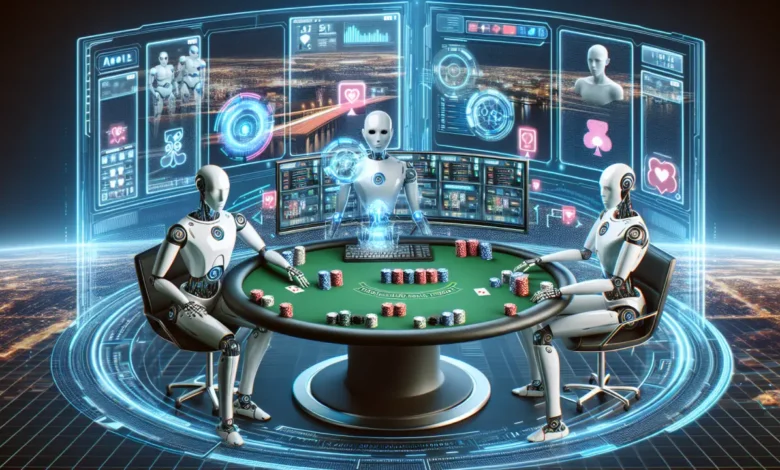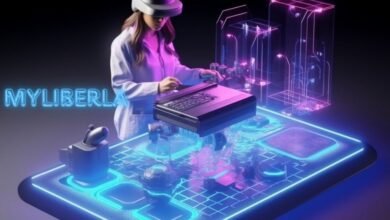Understanding PBLGameVent: A Comprehensive Guide to Project-Based Learning and Game Development

In the rapidly evolving educational landscape, the integration of game design and project-based learning (PBL) has emerged as a powerful method for engaging students in meaningful learning experiences. The concept of PBLGameVent intertwines these two innovative approaches, allowing educators and learners alike to explore complex topics in a fun and interactive way. This article will delve deep into the concept of PBLGameVent, exploring its foundations, implementation strategies, benefits, and future prospects.
What is PBLGameVent?
PBLGameVent is a fusion of Project-Based Learning (PBL) and game development, offering a unique framework that emphasizes experiential learning through the creation of games. In this approach, students engage in hands-on projects that encourage collaboration, critical thinking, and creativity while utilizing the principles of game design.
The Roots of Project-Based Learning
Project-Based Learning is an instructional methodology that empowers students to learn by actively engaging in real-world and personally meaningful projects. Unlike traditional educational practices that often emphasize rote memorization and passive learning, PBL encourages students to explore, investigate, and problem-solve in a collaborative environment. The roots of PBL can be traced back to progressive education reformers like John Dewey, who advocated for experiential learning as a means of fostering deeper understanding.
The Rise of Game-Based Learning
Game-Based Learning (GBL) has gained significant traction in recent years as educators recognize the potential of games to enhance motivation and engagement. GBL utilizes the principles of gaming—such as competition, rewards, and narrative—to create immersive learning experiences. When combined with project-based approaches, GBL allows learners to not only consume knowledge but also create it through the game development process.
Bridging the Gap: PBLGameVent
PBLGameVent represents a confluence of PBL and GBL, where students not only learn about a subject but also apply their knowledge in a tangible way by designing and creating games. This methodology fosters an environment where learners can experiment, iterate, and receive feedback in a structured yet creative manner. By doing so, students develop a variety of skills, including teamwork, communication, technical proficiency, and critical thinking.
The Core Components of PBLGameVent

To effectively implement PBLGameVent in educational settings, it is crucial to understand its core components. These elements form the backbone of the approach, guiding educators and students through the learning process.
1. Learning Objectives
The first step in any PBL initiative is to establish clear learning objectives. In the context of PBLGameVent, these objectives should align with educational standards while also addressing the interests and needs of the students. This clarity helps maintain focus throughout the project and ensures that the final game is not only enjoyable but also educational.
2. Authentic Problem-Solving
At the heart of PBLGameVent lies authentic problem-solving. Students are presented with a real-world challenge or scenario that requires them to apply their knowledge creatively. This could involve addressing social issues, scientific phenomena, or historical events through the lens of game design. By tackling real problems, learners find relevance in their studies, fostering a sense of ownership over their learning journey.
3. Collaboration and Teamwork
PBLGameVent inherently promotes collaboration. Students typically work in teams, leveraging each member’s strengths and talents to design their game. This collaborative process mirrors real-world project management, where diverse skills and perspectives are essential for success. Teamwork cultivates communication skills, empathy, and the ability to navigate conflict—qualities that are vital in today’s workforce.
4. Iterative Design Process
The iterative design process is a fundamental aspect of both game development and PBL. In PBLGameVent, students brainstorm, prototype, test, and refine their game concepts based on feedback from peers and educators. This cycle encourages resilience, adaptability, and critical evaluation of one’s work. It also emphasizes the importance of failure as a stepping stone to success, helping students understand that iteration is a natural part of the creative process.
5. Integration of Technology
In today’s digital age, technology plays a crucial role in game development. PBLGameVent leverages various tools and platforms that facilitate game creation, such as game engines, coding languages, and design software. Familiarity with these technologies enhances students’ digital literacy, preparing them for future academic and career pursuits.
6. Reflection and Assessment
Finally, reflection and assessment are integral components of PBLGameVent. After completing their projects, students should engage in self-assessment and peer evaluation, discussing what worked well and what could be improved. Educators can use rubrics to evaluate the final games, focusing on both the process and the product. This reflective practice not only reinforces learning but also encourages students to take ownership of their educational experience.
Benefits of PBLGameVent
Implementing PBLGameVent in educational settings offers numerous benefits, enriching the learning experience for students and educators alike.
Enhanced Engagement
One of the most significant advantages of PBLGameVent is its ability to engage students. By integrating game design into the learning process, students become active participants rather than passive recipients of information. The excitement of creating a game can spark curiosity and motivation, leading to deeper exploration of the subject matter.
Development of 21st Century Skills
PBLGameVent fosters the development of essential 21st-century skills. Collaboration, communication, creativity, and critical thinking are all vital competencies in today’s world. By working on projects that require teamwork and problem-solving, students are better prepared to meet the demands of the modern workforce.
Deep Understanding of Content
When students create games, they must thoroughly understand the subject matter they are addressing. This deep engagement with content allows for better retention of information and a more profound comprehension of complex concepts. By applying their knowledge in a practical context, learners solidify their understanding and can transfer that knowledge to new situations.
Increased Creativity
PBLGameVent encourages students to think outside the box and explore their creative potential. The process of designing a game requires innovative thinking and imaginative problem-solving, fostering a mindset that values creativity. This creative confidence can extend beyond the classroom, impacting students’ future endeavors in various fields.
Safe Learning Environment
The iterative nature of PBLGameVent creates a safe space for experimentation. Students can take risks, make mistakes, and learn from them without fear of failure. This supportive environment cultivates resilience and a growth mindset, essential traits for lifelong learning.
Collaboration with Industry
PBLGameVent projects can create opportunities for collaboration with industry professionals. Inviting game developers, designers, and educators into the classroom can provide students with valuable insights and mentorship. Such partnerships enrich the learning experience, exposing students to real-world applications of their work and potential career paths.
Implementing PBLGameVent in the Classroom
Now that we understand the core components and benefits of PBLGameVent, let’s explore how educators can effectively implement this approach in their classrooms.
Step 1: Design the Project Framework
Start by designing the project framework. Identify the learning objectives, key themes, and relevant content areas. Consider the age group of your students and their prior knowledge. Collaboratively brainstorm project ideas that align with the curriculum while allowing for creativity and innovation.
Step 2: Introduce Game Design Principles
Before diving into the project, introduce students to basic game design principles. Discuss elements such as mechanics, dynamics, and aesthetics. Encourage students to explore different types of games, analyzing their features and the experiences they create. This foundational knowledge will guide students as they embark on their own game development journey.
Step 3: Create Teams and Assign Roles
Form teams of students, ensuring a diverse mix of skills and perspectives within each group. Assign specific roles based on individual strengths and interests, such as project manager, artist, coder, and writer. This division of labor mirrors real-world project teams, allowing students to understand the value of collaboration and teamwork.
Step 4: Brainstorm and Prototype
Encourage students to brainstorm game concepts that address their chosen problem or topic. Use techniques like mind mapping, sketching, or storyboarding to visualize their ideas. Once they settle on a concept, guide them in creating prototypes, which could be low-fidelity versions of their games. This initial phase focuses on creativity and experimentation without the pressure of perfection.
Step 5: Test and Iterate
Set aside time for students to test their prototypes, both within their teams and with external audiences. Collect feedback on gameplay mechanics, narrative, and educational value. Encourage teams to iterate based on this feedback, emphasizing the importance of refining their designs. This process should involve critical discussions, where students learn to articulate their design choices and respond constructively to suggestions.
Step 6: Finalize and Present
Once teams have refined their games, they should prepare for presentation. This could involve creating a demo version of their game, a pitch presentation, or a marketing plan. Students should communicate their design process, the challenges they faced, and the learning outcomes of their project. Presentations can be shared with classmates, parents, or even local community members, fostering a sense of achievement and recognition.
Step 7: Reflect and Assess
Conclude the project with a reflection session. Encourage students to discuss what they learned, how they collaborated, and the skills they developed throughout the process. Use rubrics to assess the final games, focusing on criteria such as creativity, content accuracy, and teamwork. This reflection reinforces the learning experience and provides valuable insights for future projects.
Challenges and Solutions in PBLGameVent
While PBLGameVent offers numerous benefits, implementing this approach can present challenges. Here, we explore some common obstacles and potential solutions.
Challenge 1: Time Constraints
Solution: Effective time management is crucial in PBLGameVent projects. Educators can create a detailed timeline with milestones to ensure teams stay on track. Flexibility is essential, allowing for adjustments based on the students’ needs and project complexity.
Challenge 2: Diverse Skill Levels
Solution: Students will inevitably come to the project with varying skill levels in game design and technology. Educators can provide differentiated support, offering resources, tutorials, or mentorship for students who may struggle. Pairing students with differing skill sets can also promote peer learning and collaboration.
Challenge 3: Resource Limitations
Solution: Limited access to technology or resources can hinder the project. Educators can explore free or low-cost game design tools, such as Scratch or Unity, that are accessible to students. Additionally, seeking partnerships with local organizations or businesses can provide extra resources and support.
Challenge 4: Assessment and Evaluation
Solution: Assessing PBLGameVent projects can be challenging, as traditional testing methods may not adequately capture students’ learning. Educators should focus on both process and product evaluation, using rubrics that account for creativity, teamwork, and problem-solving skills. Incorporating self-assessment and peer evaluation can also enrich the assessment process.
Case Studies: PBLGameVent in Action
To illustrate the effectiveness of PBLGameVent, let’s look at a few case studies where this approach has been successfully implemented.
Case Study 1: Environmental Science Game Design
In a high school environmental science class, students were tasked with creating a game that raised awareness about climate change. Working in teams, they researched various aspects of climate change and its impact on ecosystems. Students utilized tools like Unity to develop interactive games that allowed players to make decisions affecting the environment. The final presentations included gameplay demonstrations, showcasing their understanding of scientific concepts while engaging peers in critical discussions about climate action.
Case Study 2: Historical Role-Playing Game
A middle school history teacher implemented PBLGameVent by challenging students to design a role-playing game based on significant historical events. Students collaborated in teams, each focusing on a different era, from the Renaissance to the Civil Rights Movement. They researched their chosen period, developed characters, and crafted storylines that highlighted key historical figures and events. The culmination of the project involved a game fair, where students showcased their games to the school community, inviting participants to immerse themselves in history through gameplay.
Case Study 3: STEM and Coding Challenges
In a STEM-focused curriculum, students engaged in PBLGameVent by designing educational games that taught coding fundamentals to younger students. Working in cross-age teams, high school students mentored elementary students while creating interactive coding games. This collaboration not only reinforced the high school students’ understanding of coding concepts but also empowered them to communicate complex ideas in a simplified manner. The project concluded with a coding camp where younger students played the games and provided feedback, enhancing the sense of community and shared learning.
Future Prospects of PBLGameVent
As education continues to evolve, the future of PBLGameVent looks promising. Here are some emerging trends and prospects for this innovative approach:
Integration of Virtual and Augmented Reality
Advancements in technology, such as virtual and augmented reality, offer exciting possibilities for PBLGameVent. These tools can create immersive learning experiences that transport students to different worlds, allowing them to engage with content in unprecedented ways. Future projects may involve developing VR or AR games that explore historical events, scientific phenomena, or cultural narratives.
Emphasis on Social and Emotional Learning
As educators increasingly recognize the importance of social and emotional learning (SEL), PBLGameVent can play a pivotal role in this domain. By fostering collaboration, empathy, and communication, this approach aligns well with SEL objectives. Future iterations of PBLGameVent may incorporate specific SEL components, helping students develop resilience, self-awareness, and interpersonal skills.
Collaboration with Educational Institutions and Industries
As the demand for innovative educational practices grows, collaborations between educational institutions and industries will likely expand. PBLGameVent can serve as a bridge, connecting students with professionals in the gaming industry, education technology, and other fields. These partnerships can provide valuable resources, mentorship, and real-world insights that enrich the learning experience.
Expansion of Online Learning Platforms
The rise of online learning platforms has made it easier for educators to implement PBLGameVent across diverse settings. Virtual classrooms allow for collaboration between students from different geographical locations, fostering global perspectives and cross-cultural exchanges. Online tools and resources can enhance project management and communication, making PBLGameVent more accessible to a wider audience.
Increased Focus on Interdisciplinary Learning
The future of education is increasingly interdisciplinary, and PBLGameVent embodies this trend. By merging subjects like science, art, history, and technology, students gain a holistic understanding of complex topics. Future projects may involve collaborative efforts across disciplines, encouraging students to see the connections between their learning and the world around them.
Conclusion
PBLGameVent represents a dynamic and engaging approach to education that harnesses the power of project-based learning and game development. By fostering creativity, collaboration, and critical thinking, this methodology empowers students to take ownership of their learning while preparing them for the challenges of the future.
As educators and students embrace PBLGameVent, they are not just creating games; they are building skills, forging connections, and exploring new horizons of knowledge. With its emphasis on real-world problem-solving and immersive experiences, PBLGameVent is shaping the next generation of learners, equipping them to thrive in an ever-changing world.
In the world of education, the possibilities are limitless, and PBLGameVent is just one of the many innovative pathways leading to a brighter future for learners everywhere. By championing creativity and exploration, we can cultivate a generation of thinkers, innovators, and change-makers ready to make their mark on the world.



